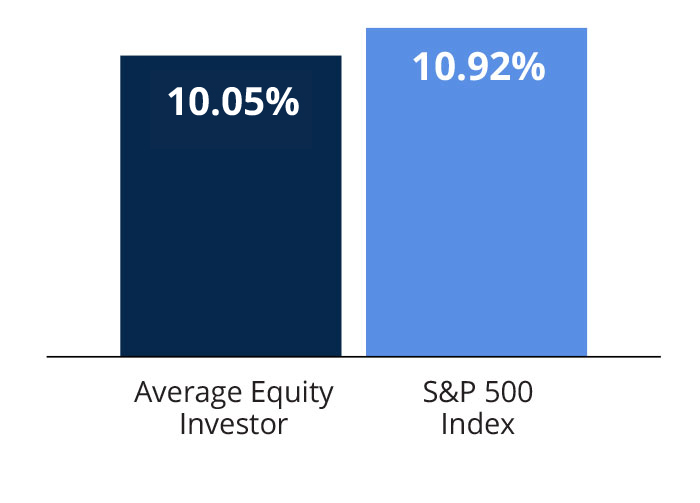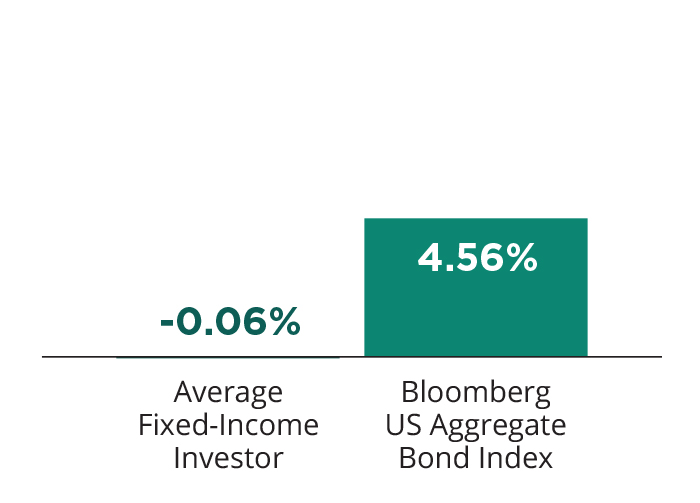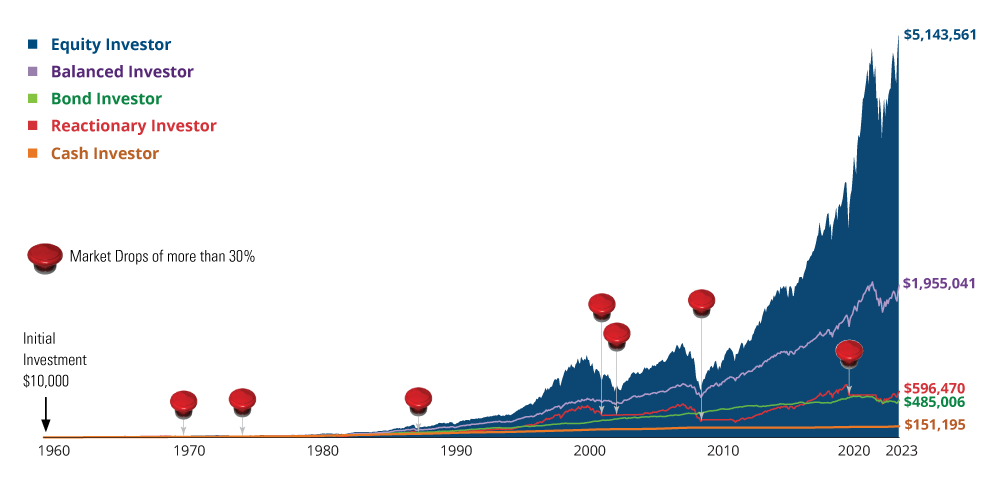Functions Of The Reactive And Reflective Parts Of Our Brains

Reactive Brain
- Avoid danger or loss
- Can shut down reflective brain
- Emotional responses

Reflective Brain
- Complex decisions
- Rational
- Analytical
Remaining calm is a Navy Seal’s key to success. Yes, they endure extreme combat training. But during a mission, all that training would be useless if they couldn’t control their emotions. To remain calm, they use “box breathing.” You can try it by breathing in for four seconds, holding your breath for four seconds, exhaling for four seconds, and holding your lungs empty for four seconds. Repeat it a few times. In the most stressful situations, box breathing helps Seals remain calm.1
Similarly, investors need to remain calm when market volatility strikes, but it can be difficult to control our emotions. When we fear losing money or missing out on gains, emotions can influence our decision-making ability. Like the Seals, we need a way to control our emotions to avoid making decisions that could hurt our long-term results.
1. Two Parts of Our Brain With Different Objectives
Imagine you’re taking a relaxing walk down a trail. Suddenly, a snake slithers on the path in front of you. Do you start trying to determine what kind of snake it is, or whether or not it’s poisonous? Probably not. Most of us, except snake enthusiasts, automatically stop, jump back, and start walking backward.
This type of response is caused by what neuroscientists call our reactive brain. It’s the part of our brain that helps us avoid danger or loss.2 With investing, it reacts when we’re afraid of losing money. It can also react with excitement when we have a big gain or worry if we’re afraid of missing one. For example, our reactive brain is activated when people in the office pool their money together to buy a lottery ticket. Our reactive brain wants us to participate so we don’t miss out on a windfall.
Another part of our brain is what’s called the reflective brain. It performs complex decision-making and planning, e.g. solving a calculus problem, or following a recipe. How the reactive and reflective parts of our brain work together can have significant effects on our investment results.
2. When Our Reactive Brain Takes Over
We like to think of ourselves as rational decision-makers when it comes to investing. We envision ourselves building a long-term plan, with a diversified portfolio of stocks, bonds, and cash investments —and sticking with it. But sometimes, market volatility can influence our rational outlook, such as an 1,000- or 2,000-point drop or rise in the Dow (See Figure 1). Many things can drive volatility, such as trade deals, national debt, interest rates, and more recently, a pandemic. Dramatic headlines often follow, proclaiming either soaring or plunging markets, which can cause our rational mindset to go haywire.2
Sometimes, those big point drops turn into bear markets (typically defined as a 20% market drop). Since WWII, there have been 14 bear markets—on average, about one about every 5.6 years.3 When they happen, do you think to yourself, “Oh, that’s just another bear market. I’m a long-term investor, so I’m not going to give in to fear by changing my portfolio”? Possibly.
But often a bear market can cause a different reaction—one that causes investors to question their investment plans. News about market drops can trigger our reactive brain in about 12 milliseconds.2 Because its function is to help us avoid danger and loss, our reactive brain can tempt us to change our portfolio to avert losing more money.








